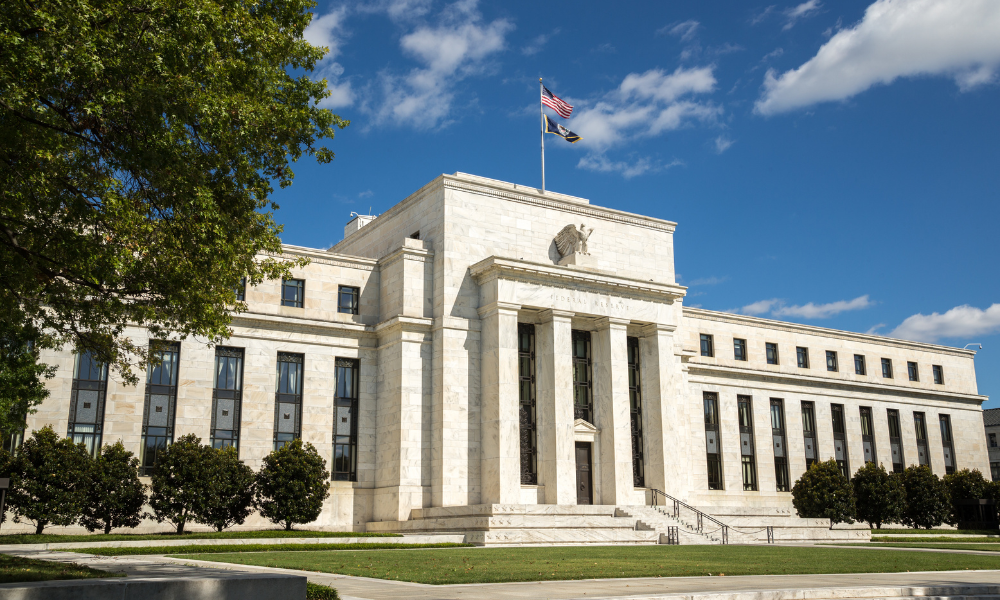CI GAM economist explains what went into Powell’s decision to keep rates steady and how investors & advisors can manage the uncertainty

The only thing investors seemed certain of going into the FOMC meeting yesterday was that the US Federal Reserve was going to hold its interest rate steady. They were right to assume so, simply because the rest of the picture for the US economy is so uncertain. Largely as a result of whipsaw trade policy the US economy has seen a quarter of anomalous negative growth, some slowing in inflation, and stronger than expected labour market data.
Neil Shankar, Economist at CI Global Asset Management, broke down the reasons behind the Fed’s decision to hold. He explained the role that trade policy has played in economic data to this point and what we could expect going forward. He outlined, too, some of the other forces that could play a role in future Fed decisions and what advisors need to be saying as they work to ensure clients stay focused on what matters.
“I think by holding rates steady, the Fed is effectively providing itself with some time to assess the full impacts of tariffs and doing what they can to ultimately avoid a scenario where they ease policy too soon and risk a resurgence in inflation,” Shankar says. “There's the possibility that its dual mandate, price stability and maximum employment may be facing competing pressures as a result of the Trump administration's tariff policy. On the one hand, while inflation has moderated over the past couple of years, and we saw further evidence of this in the latest reading for March, it remains elevated relative to the Federal Reserve's 2% target…At the same time, the economic activity data, and specifically the labour market data, have held up. There has been a slowing evident on a trend basis, but nothing to indicate that the labour market is weakening in a non-linear fashion. Looking ahead, tariffs are likely to exert upward pressure on inflation and pose downside risks to the labour market.”
Leading up to the meeting Fed officials, including Fed Chair Jerome Powell, had made the case that the Fed is positioned to wait for greater clarity. Economic data has given them no real reason to urgently begin easing. Even the negative GDP growth in Q1 can be explained by an anomalous increase in imports as businesses stocked up on inventories before tariffs were implemented. This view that the Fed could afford to hold was, according to Shankar, well communicated to markets before the meeting.
Because a hold was well anticipated and its underlying reasoning understood, the immediate market reaction was relatively muted. Even the tone of the communication from the Fed in the decision announcement and subsequent press release matched the tone struck leading into the meeting. As a result, markets ended the day with minimal reaction.
Shankar sees a few forward-looking trends in the mixed picture that is US economic data. He highlights that businesses and households have become more pessimistic in their economic outlooks. Surveys of business sentiment, CEOs, purchasing managers, and consumers have all taken hits. Harder data like jobs and consumption look somewhat healthy. However, Shankar notes that these data tend to be backward looking and as of now largely reflect a pre “liberation day” reality. He expects we will learn more about the economic impacts of Trump’s trade policy in the coming weeks.
The clarity provided by those data could be especially important given how much uncertainty there has been about US trade policy. With tariffs implemented, walked back, and re-escalated within days or hours, there is a degree to which the economic outlook has become more unclear. Shankar notes that this lack of clarity is some of what is keeping the Fed in ‘wait and see’ mode.
Beyond Trade policy, President Trump has also broken with standard Presidential decorum and explicitly called for the Fed to cut interest rates. While Shankar notes that these calls will not influence the Fed’s decision in the face of stark data, he concedes that it could have raised the bar for easing on the margins. Explicit calls for a cut by the President, he says, could have the unintended effect of prompting slightly more hawkish communication from the Fed, though he notes that it should not materially impact the path of interest rate policy.
As advisors and their clients look at the decision and try to parse through the news, Shankar emphasizes the importance of context and calm.
“I think amid this ongoing economic uncertainty, the importance of diversification for Canadian retail investors is clearer than ever. Canadian investors should really be considering a well-diversified portfolio as it helps navigate both the challenges and opportunities that arise across different asset classes as well as global markets,” Shankar says. “Amid all of the volatility, the uncertainty, the constant barrage of headlines I think clients don't need more noise. They need a voice of reason to help them stay focused on what truly matters, not another alarm bell.”



